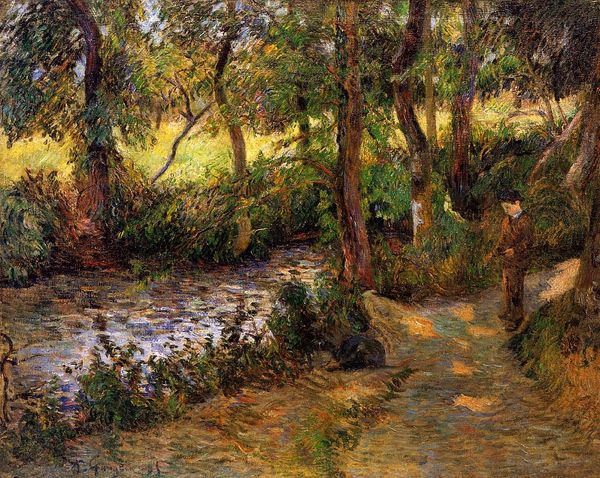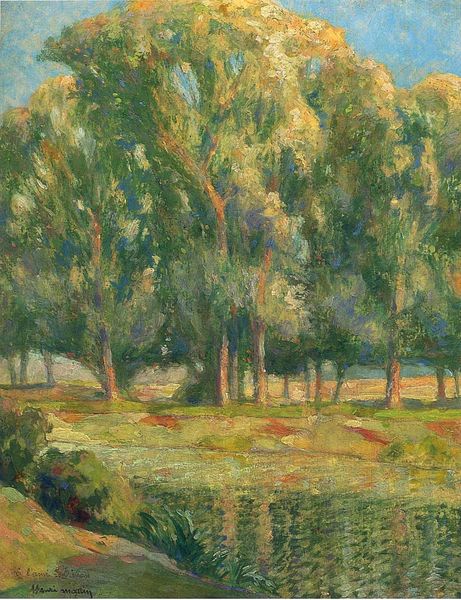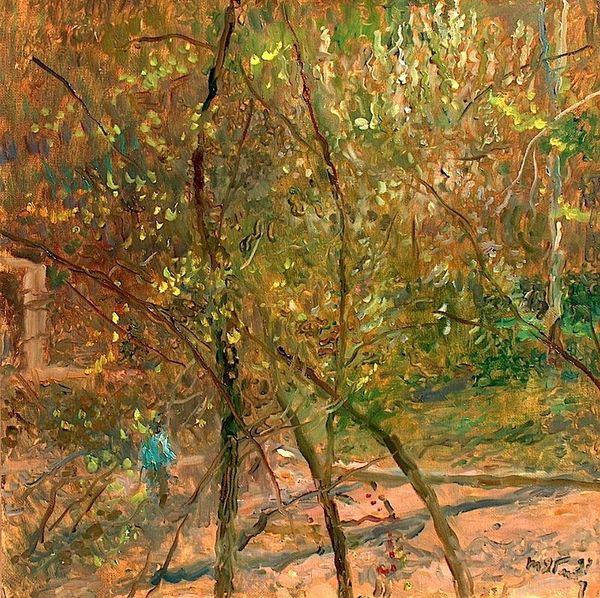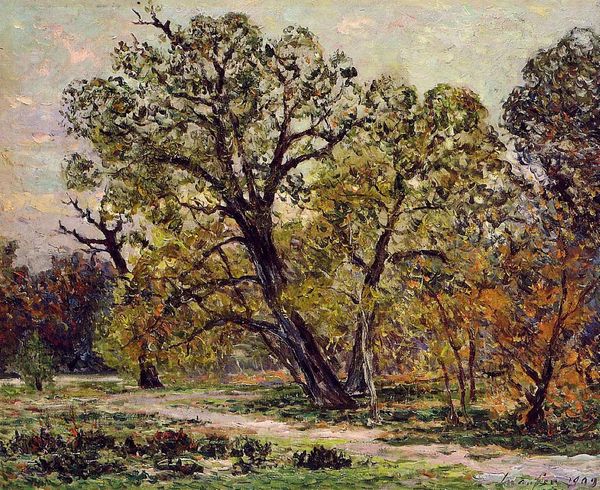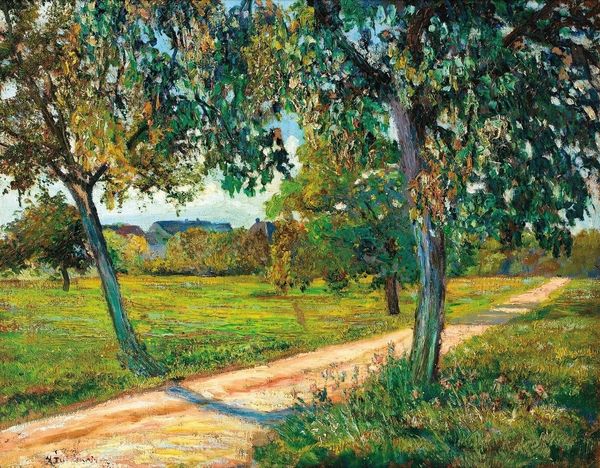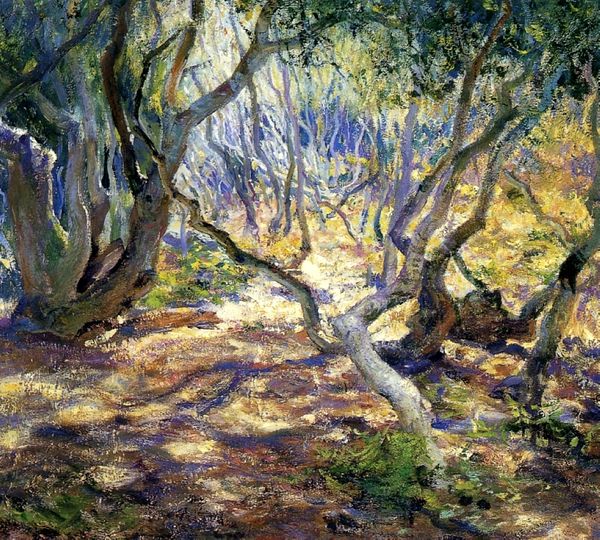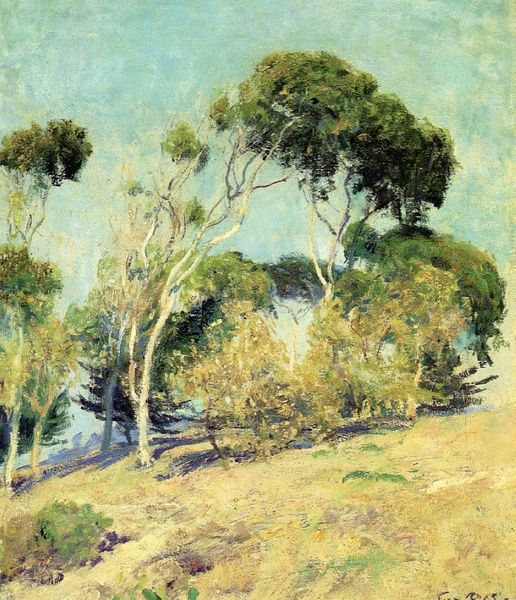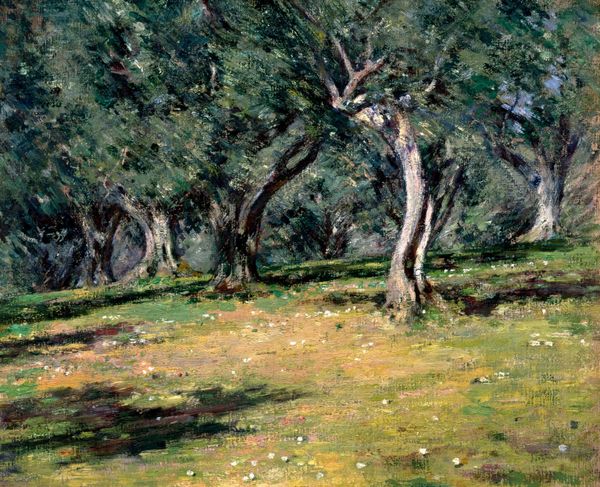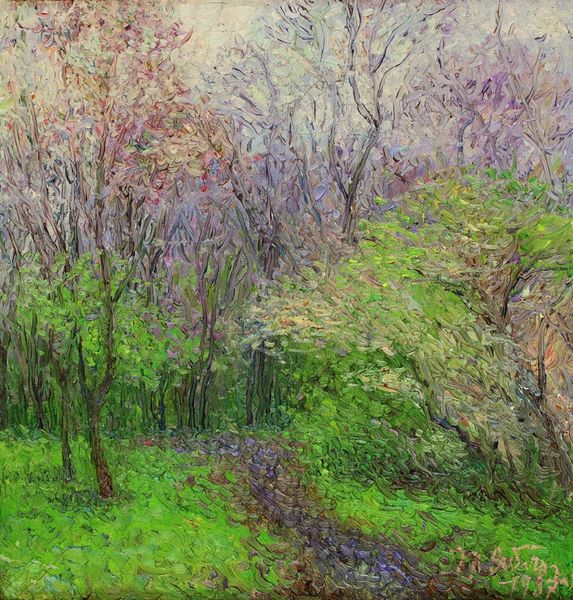
tempera, oil-paint, fresco, pastel
#
tree
#
animal
#
tempera
#
impressionism
#
oil-paint
#
landscape
#
leaf
#
impressionist landscape
#
fresco
#
oil painting
#
forest
#
plant
#
symbolism
#
pastel
#
post-impressionism
Dimensions: 90 x 115 cm
Copyright: Public domain
Editor: So here we have Paul Gauguin's "Tropical Landscape, Martinique," painted in 1887. It's currently held at the Lenbachhaus in Munich. The overall effect is quite dreamlike, wouldn't you agree? What structural elements stand out to you in this work? Curator: Immediately, the layering of forms arrests the gaze. Gauguin uses distinct planes—the foreground stone wall, the midground pathway, and the dense background foliage—to create depth. How does this structure guide your eye? Editor: I see what you mean. It pulls my eye back, but those vibrant colours seem to flatten the perspective somehow. It's like the composition is fighting with the colour palette. Curator: Precisely. Notice how Gauguin employs a limited colour range, predominantly greens and browns, but saturates them to an unnatural degree. The brushwork, too, plays a crucial role. Observe the short, broken strokes, almost stippled in places. What does this technique evoke for you? Editor: I think the strokes emphasize the density of the foliage but they feel almost… chaotic? I am fascinated by the contrast between the technique and the finished look, with these shapes that become a peaceful landscape. Curator: Indeed. Gauguin manipulates the formal elements to convey something beyond a mere visual representation. The surface acts as a tension-filled plane, where brushstroke meets colour. What’s been revealed to you through our short dialogue? Editor: I'm definitely seeing more of the construction within this supposed ‘Impressionist landscape’, seeing more than a dreamy vision. So it makes me question how Gauguin has shaped those conventional views. Curator: Well said. The analysis refines how we interpret any artistic process and result.
Comments
No comments
Be the first to comment and join the conversation on the ultimate creative platform.
